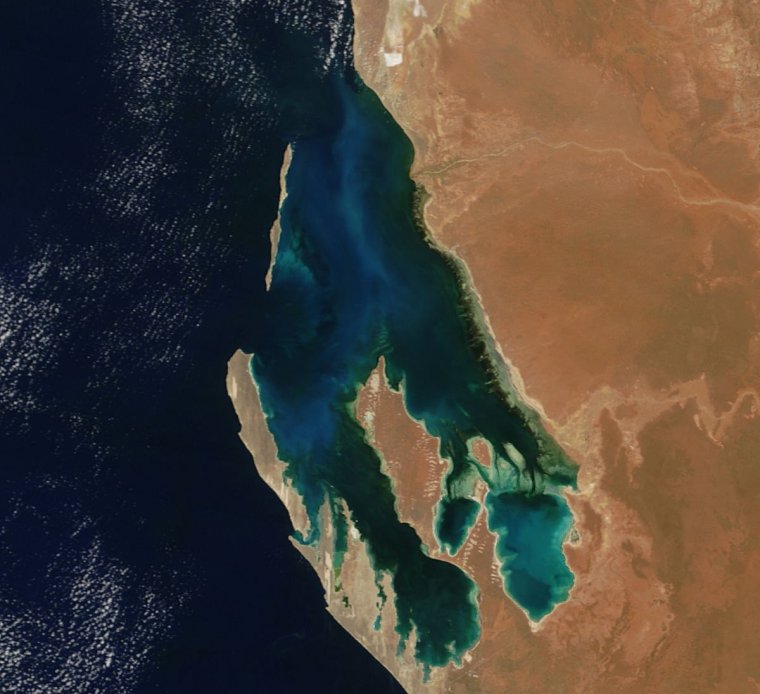| News / Science News |
Scientists discover seagrass off Australia is world's largest plant
Scientists at the University of Western Australia published a study suggesting that a seagrass off the coast of Western Australia is the world's largest plant.

Shark Bay viewed from satellite on November 6, 2004. Photo: NASA
The Posidonia australis is thought to have begun to clone itself 4,500 years ago, and covers about 200 square kilometres (77 square miles). It is located in Shark Bay, a UNESCO World Heritage Site in Western Australia.
Shark Bay was submerged relatively recently, within the past 8,500 years.
The scientists discovered the plant was a single organism after taking 18,000 separate genetic markers to examine the seagrass to find samples to use in restoration projects.
However, they discovered the same plant had cloned itself many times instead. Dr Martin Breed, an ecologist at Flinders University, said “We thought 'what the hell is going on here?'... We were completely stumped."
Jane Edgeloe, one of the co-authors of the research, said the DNA of the samples was compared and it was discovered from this that the seagrass meadow was a single plant.
The plant measures at least 180 kilometres (112 miles) in length. As well as being the world's largest known plant, it is the world's largest known clone.
The seagrass greatly surpasses the 43-hectare stand of quaking Aspen trees in Utah, United States, previously thought to be the world's largest plant.
The seagrass grows a maximum of 35 centimetres per year, with its large size helping scientists calculate its age.
Dr. Elizabeth Sinclair, another co-author of the study, said the plant's survival was helped by it holding onto all the chromosomes from both its parents.
This gave it genetic diversity, which is unusual among plants that produce asexually. The plant does not sexually reproduce; however, subtle variations in its DNA may help explain its longevity.
Associate Professor Kathryn McMahon, of Edith Cowan University, was not involved in the study but is an expert on seagrass. She said seagrass tends to live for between 2,000 and 100,000 years, meaning the plant's age of about 4,500 years fits into the normal age range of seagrass.
Despite the plant's vast size, in the past ten years, almost a tenth of it has been destroyed by cyclones and rising ocean temperatures.
The bay has relatively high salinity and its temperatures vary from as cold as 15 °C (59 °F) to as hot as 30 °C (86 °F). (Wikinews)
YOU MAY ALSO LIKE





